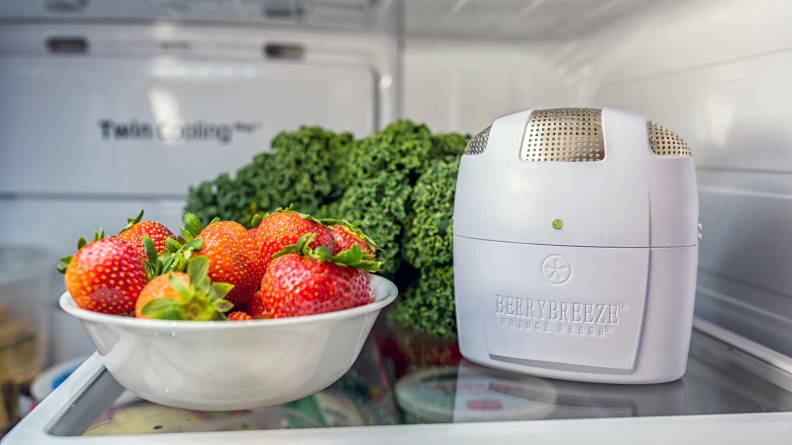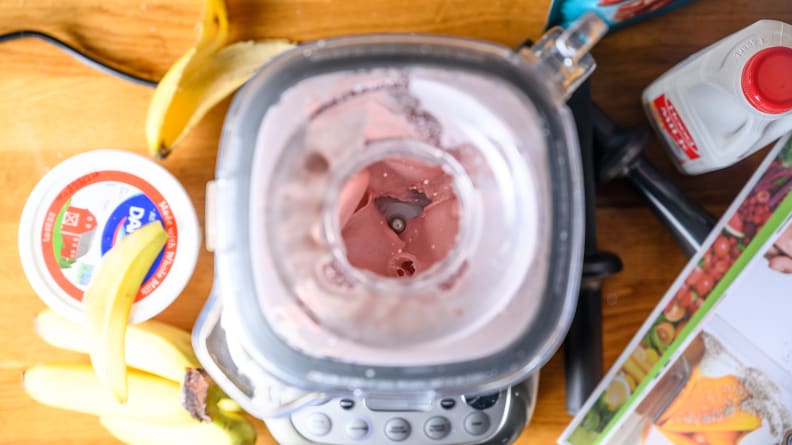7 ways to make your groceries last longer
Here's how to reduce food waste right at home.
Products are chosen independently by our editors. Purchases made through our links may earn us a commission.
Reducing food waste is always a worthwhile endeavor—but since everything from the pandemic to war in Ukraine has brought inflation to a 40-year high, minimizing waste has gone from noble to necessary. With so many of us dealing with sky-high grocery bills, we need to make sure that the food we buy or grow will last us as long as we need it to.
If you’re trying to stretch one week of groceries into two, reduce food waste, and still keep a clean and tidy kitchen, we’re here to help. Here are our top tips for making the most of your groceries while still cooking delicious meals.
1. Keep your fridge clean—and toss bad food

Keeping your fridge clean and organized will help reduce food spoilage.
It might seem counterintuitive, but holding onto food that’s near spoiling isn’t thrifty—it’s likely to make your other food spoil faster. If you have crisper drawers stuffed with aging produce, or a cheese drawer with months-old cheddar, you’re promoting bacteria growth in and around your food. In the case of produce, the ethylene produced by ripe fruit will cause the fruit around it to ripen, too—and eventually spoil.
If you want to make sure your groceries aren’t spoiling quickly, keep your fridge clean and organized, and quickly toss anything that goes moldy or rotten. It might be helpful to use a fridge organization guide so you can easily see and access all your food at once, or try a device that helps reduce bacteria growth on produce.
Get the Lasko AP120 Fresh Slice Fridge Ionizer from Amazon for $24.99
2. Regrow alliums and herbs in water
You might have seen this hack on social media—and it actually works. You can regrow alliums like garlic and green onions, or really anything with intact roots, right in a glass of water. This is great for when fresh produce is hard to come by, or grocery trips have been spread further apart due to hiked up prices.
Simply save the ends of your produce with the roots on and place in a container with water somewhere sunny like a windowsill—but make sure only the roots are submerged. You should start to see growth in a few days, and you’ll need to change out the water as it disappears.
Unfortunately, you can’t keep produce edible in water forever. Without soil, the plant will begin to lose its flavor. If you can, try to pot any plants you’re serious about in soil within a couple of weeks. I just did this with a grocery store basil plant that had intact roots.
Get a 6-pack of glass Mason Jars from Amazon for $19.99
3. Save all your broth—even from beans
If you’re making more beans, soups, stews, and sauces than usual, you’re probably producing a lot of lovely broth that’s worth saving for future dishes. Yes, chicken bones make great chicken broth, but beans and veggies also make delicious, rich broth—much better than the store-bought stuff.
To make things easy for yourself, try to save leftover broth in small containers and freeze them. Then, when you’re ready to cook, you have a little cube of broth ready to throw in the stockpot. Bean broth has done wonders for my dishes like risotto, lentil soup, and pasta.
Get set of 18-piece glass Pyrex containers from Amazon for $29.99
4. Don’t toss your parmesan rinds
While you’re saving your broth, make sure to save your parmesan rinds. These salty, flavorful rinds can add a ton of depth to pasta sauces and other dishes. Simply save rinds as you produce them in a plastic bag and store in the freezer until ready to use.
Get a pack of Ziploc Quart Freezer Bags from Amazon for $8.99
5. Wrap meat and leafy greens before storing
Unless you’re going to a butcher, the meat you bring home from the store is unlikely to be packaged well for storage. Styrofoam and thin plastic wrap will not hold up as well as butcher paper and freezer bags—so when you get home, try to rewrap any raw meat. If you’ll be cooking it soon, this is also a good time to season the meat with salt for maximum tenderness.
If you bought more meat than you’ll be cooking at once, make sure to divide and conquer—rewrap and freeze any meat you won’t be making in the next couple of days. This will help keep meat from going to waste. Freezing in portion-sized bags also helps here.
You should also wrap leafy greens and herbs in a damp paper towel before storing—this will keep the leaves from wilting for as long as possible. We've published an entire guide to storing and preserving your fresh-grown or store-bought herbs.
Get a Brown Butcher Paper Roll from Amazon for $18.75
Get a pack of Ziploc Perfect Portion bags from Amazon for $13.47
6. Make a lot of smoothies

You can make smoothies out of just about any fruit or veggies you want.
If you’re not already on the smoothie train, now’s the time to hop on. Smoothies might not be as filling or as flavorful as real meals, but they’re a great breakfast or snack that can help you get much-needed nutrients when your diet isn’t filled with produce.
Because you can put just about anything you want in a smoothie, they’re a great way to reduce food waste and use up old fruit and veggies. Just freeze anything you want (before it spoils, of course), add a nut butter or dairy product for protein, and blend in one of the best blenders for smoothies.
Get the Magic Bullet 11-piece set from Amazon for $37.67
7. Freeze just about everything
While you’re freezing fruit and veggies for smoothies, consider freezing a lot of things you wouldn’t think to freeze before. Bread, coffee, meat, broth, herbs, leftovers, and even mozzarella cheese all freeze well and can easily be defrosted in the fridge (or used from frozen) when you’re ready to prepare them. Of course, you can’t freeze a lot of these products forever or their quality will start to wane, but a couple of weeks in the freezer won’t hurt.
Freezing as the default and defrosting as necessary is a great way to make sure your food doesn’t spoil and helps reduce your need for grocery trips. Consider investing in a second freezer—back when the pandemic started, my household of five picked up this Magic Chef chest freezer, and it’s been incredibly helpful. Without it, we wouldn’t have the room to freeze everything we need, and we’d be making much more frequent grocery trips.
Get the Magic Chef chest freezer from Home Depot for $199
You’re on your way to becoming a kitchen master. Take the next step and sign up for Chef's Course. You’ll get weekly tips, tricks, and recipes from top chefs sent straight to your inbox. It’s a whole master course for free.


